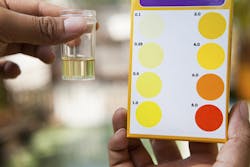LAUSANNE, Switzerland — Feb. 26, 2016 — To avoid microbial contamination, the U.S. and many other countries require the presence of residual disinfectant in drinking water, according to a press release.
Yet this can lead to an unappealing taste, as well as the formation of potentially carcinogenic byproducts and issues with corrosion. What’s more, there is little direct evidence that residual disinfectants have prevented drinking water-related disease outbreaks.
Is chlorine really necessary for safe drinking water, or is it possible to deliver high-quality tap water without adding chemical disinfectants?
A recent commentary published in the journal Science presents evidence from Europe showing that chlorine can be omitted as long as the right infrastructure is in place.
Read more on testing for chlorine in drinking water.
A comparison of waterborne disease outbreak data from the Netherlands, U.K. and U.S. shows that the Netherlands has the lowest risk of waterborne illness, despite a lack of residual disinfectant use.
More than half of the water pipes in the Netherlands have been replaced in recent years, while the United States and United Kingdom are running on a system comprising “expired” pipes, the authors noted. Aging pipes are more likely to leak, increasing the chances of bacterial contamination.
Additional safeguards are necessary if water is to be distributed without added chlorine, the researchers said. It requires protecting groundwater sources, properly controlled water treatment, and regular maintenance of the water distribution network.
But with proper safeguards, the European evidence to date suggests that safe water can indeed be delivered without residual disinfectant.
You can find the entire release here.
